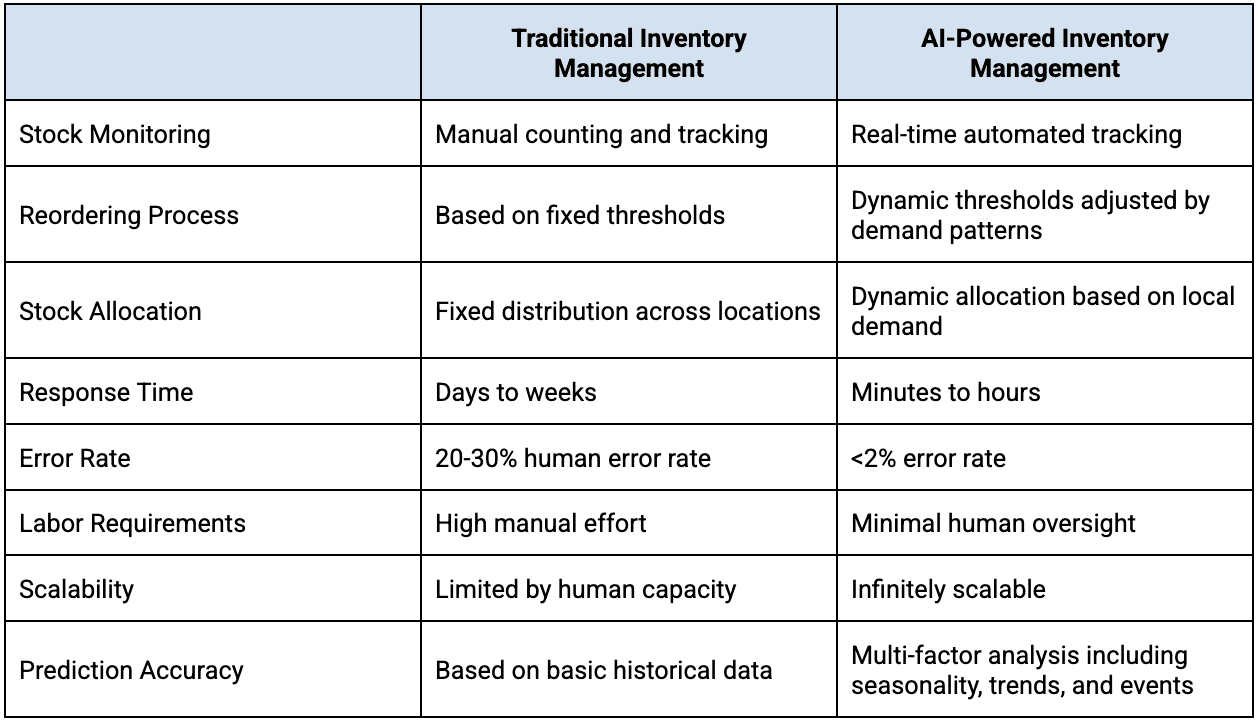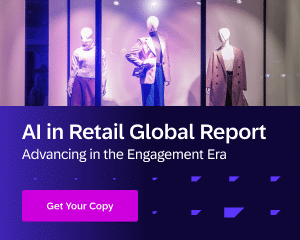Picture this: It’s 4:30 PM and your campaigns are humming. Not with noise, but with intelligence. Customer journeys are being personalized in milliseconds. Pricing is adjusting in real-time to competitor moves and customer price sensitivity. Your conversion rates are leaping beyond industry benchmarks. Work? Done. Laptop? Closed. Time–finally back in your day.
This isn’t a fantasy–it’s the reality of leveraging cutting AI-technologies into your marketing strategies.
Gone are the days of manual updates, fragmented data and missed opportunities. No longer a speculative technology, AI has become the backbone of modern digital commerce. The numbers speak for themselves. In a recent global survey from McKinsey, 65% of respondents reported regularly using gen AI, and 20% of leaders made AI their number one priority in e-commerce in 2024.
Instead of grappling with obstacles and fighting with technology, savvy digital retailers are realizing the potential of this technology to unlock their business’s full potential. In this article, we’ll explore 16 AI use cases in e-commerce that are helping businesses like yours level up their game.
16 AI Use Cases for E-commerce Brands
Online retailers are leveraging AI to help them with everything from personalizing content at scale, to predicting and preventing customer churn, to dynamically adjusting prices in real-time. Below are 16 use cases that are moving from nice-to-have to table stakes for any e-commerce brand.
1. Personalized product recommendations
Imagine a shopping experience that feels like having your personal stylist and best friend rolled into one. AI-powered recommendation engines are made to be just that. By using advanced algorithms and analyzing purchasing history, browsing behavior, and real-time interactions, AI algorithms craft product recommendations that are personalized and tailored just for you.
BrandAlley, an online fashion retailer, successfully increased their average basket value by 10% by making the switch from basic marketing to AI-driven personalization. By analyzing customer data and behavior, they could deliver highly targeted and personalized experiences that resonated with their audience.
Since starting to leverage AI, we saw an increase by 10% in our average basket value and we also won back 24% of customers that were likely to defect.
2. Virtual Shopping Assistants and Chatbots
Chatbots are no longer just robotic script-followers. The AI variety of intelligent assistants understand context, provide personalized recommendations, and resolve complex customer inquiries. And the best part? Your company can address customer inquiries 24/7–long after your customer support team has logged off for the evening.

3. Image-based searches
Picture this. Your customer is watching their favorite influencer on Instagram and in the background, they notice a “perfect green couch” that would look absolutely fabulous in their living room. Rather than embarking on a frustrating quest by typing a query in Google, they simply snap a photo and instantly see product matches across a variety of e-commerce sites. This is the power of AI-enabled image-based product searches, and it’s a game changer – especially for fashion mavens and home decor enthusiasts who are using visual search as their secret weapon for style hunting.
Pro tip: If you want to watch your cart values soar, ensure you have high-quality images of your products from all angles to improve matching accuracy. This will help image-based search algorithms match your products to their product-seeking customers.
4. AR that actually works (thanks to AI)
Remember when “try before you buy” meant crossing your fingers and hoping? AI-enhanced Augmented Reality (AR) is bringing confidence to those “add to cart” clicks. Customers can now see exactly how that table fits in their dining room or how those glasses look on their face. This isn’t just cool tech – it’s another level of customer experience and engagement. Brands are capitalizing on this growing trend and experimenting with everything from virtual try-ons to interactive gaming and 3D mapping.
5. Predictive customer service
Imagine knowing a customer’s frustration before they do. AI analyzes behavioral patterns, identifying potential issues before they escalate into support tickets. A delayed shipment? Your AI triggers automated updates. Frequent site abandonment? It flags UX issues for immediate fixing. This isn’t just support – it’s customer service from the future and it not only helps you reduce customer support costs, but it also keeps your customers satisfied.
6. The returns revolution
The $816 billion problem nobody talks about? The steep cost of returns in retail merchandise. AI predicts which products are likely to be returned based on customer data, purchase history, and product attributes. Smart brands are taking these AI insights and running with them. They’re tweaking product descriptions to manage expectations, fine-tuning size recommendations to nail that perfect fit, and even using AI to play quality control inspector on returned items.
By leveraging AI-driven analytics in returns management, you can get ahead of costly returns and anticipate customer complaints before they ever occur.

7. Demand forecasting and supply chain management
AI-powered demand forecasting is the difference between playing catch-up and staying ahead of the game. While your competitors are still crunching last month’s numbers, AI is analyzing everything from TikTok trends to weather patterns to local events – to predict what customers want before they know they want it. According to a recent study by McKinsey & Company, 80% of supply chain leaders expect to or already use AI for demand planning. Brands can make more informed decisions with this highly accurate predictive technology. No more guesswork, no more markdowns, no more missed opportunities.
8. Inventory management on autopilot
Your warehouse is bleeding money, and you might not even know it. You can avoid this cost center by leveraging AI to not just track inventory, but orchestrate it with precision. Stockouts and overstocking can become worries of the past with AI’s predictive and dynamic precision.

9. Dynamic pricing attuned to your inventory
Think of automated dynamic pricing like surge pricing for your entire inventory. When demand spikes, your prices automatically rise to capture maximum value. When products are gathering dust, AI strategically drops prices to clear space. The system even predicts which products need price adjustments before they become deadweight in your warehouse. That means you can make real-time adjustments when it matters: Your competitors just slashed their prices; your best-seller is trending on TikTok at 3 AM.
10. Personalized promotions and offers
Mass discounts mean you’re throwing money away. Why offer 20% off to someone who’d buy at full price? AI analyzes purchase history, browsing behavior, and even price sensitivity to craft offers that hit the sweet spot. For example, Customer A gets free shipping at $50. Customer B gets 15% off their favorite brand. Your margins stay healthy, and your customers feel special.
11. Fraud detection that never sleeps
Every fraudulent transaction costs you twice – lost product and lost customer trust. By establishing a baseline of normal activity, AI can quickly flag suspicious transactions or behaviors that deviate from the norm: unusual shipping addresses, strange buying patterns, suspect IP addresses. When milliseconds matter, AI is your 24/7 security guard, protecting your bottom line and your reputation.
12. Customer segmentation and targeting
AI-driven segmentation has revolutionized customer profiling, transforming generic demographic buckets into actionable, hyper-specific insights. Instead of vague personas like “females, 25-34, urban,” marketers now have access to granular segments based on intricate behavior patterns, detailed purchase histories, and nuanced engagement data.
For instance, a segment might be defined as “weekend shoppers who browse on mobile and buy premium brands after payday.” This level of precision enables marketers to craft highly targeted campaigns that resonate with specific audience subsets, driving engagement and conversions across multiple channels. Now that’s targeting you can actually use for your marketing campaigns.
13. Voice commerce
“Alexa, reorder my favorite shampoo.” Voice shopping isn’t coming – it’s here, and by 2025, voice commerce will be a $80 billion market. AI-powered voice recognition understands context, remembers preferences, and makes buying as easy as speaking.
Pro tip: By optimizing your content for conversational language and by adding long-tail keywords to your content strategy, you’ll ensure your brand gets a piece of the voice search pie.
14. Social media integration and monitoring
Your customers aren’t just talking—they’re broadcasting their desires, frustrations, and dreams across the social media landscape. And AI is listening. Every mention, comment, and hashtag becomes actionable intelligence for your brand. Brands can now detect market shifts instantly, personalize marketing strategies, and proactively address customer concerns before they escalate. AI can help you wade through the social chatter and find golden strategic insights to supercharge your marketing strategies.

15. Product descriptions that sell themselves
Stop staring at that blank page. AI generates SEO-optimized, conversion-focused product descriptions in seconds. Not just basic specs – compelling copy that speaks to customer pain points and desires. Multiply that across thousands of SKUs, and you’ve just saved months of writing time.
16. Email marketing magic
AI is transforming email marketing from a one-size-fits-all approach to a precision-targeted communication strategy. These intelligent systems optimize everything from send times and subject lines to content and segmentation, dramatically improving open rates, click-through rates, and conversions. Combine that with personalized content and automated A/B testing, and you’re looking at open rates that make traditional email marketing look like spam.
Unlock the power of AI with Emarsys
Remember that notification overload we talked about at the beginning? With AI handling everything from email campaigns to product recommendations, pricing strategies, and content optimization, those overwhelming 2 PM alerts can become a thing of the past. Instead of pouring your resources into manual tasks, you can focus on what really matters: growing your business and delivering exceptional customer experiences.
The future of retail isn’t just digital – it’s intelligent. And it’s already here. Ready to transform your e-commerce business with AI? Explore how our e-commerce solutions can help you implement these game-changing capabilities and stay ahead of the competition.







